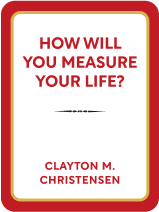

This article is an excerpt from the Shortform book guide to "How Will You Measure Your Life?" by Clayton M. Christensen. Shortform has the world's best summaries and analyses of books you should be reading.
Like this article? Sign up for a free trial here .
What are some resource allocation examples you can learn from? How did Apple improve its resource allocation strategy? Why is it sometimes necessary to scrap a project?
It’s important that the allocation of resources aligns with strategy in business. By examining real-life resource allocation examples you can understand how to improve your own strategy.
Read on to find some resource allocation examples you can learn from.
Learning From Resource Allocation Examples
Many interests and priorities compete for resources. Where you spend your resources, intentionally or unintentionally, is your real strategy. It’s the accumulation of your daily decisions and actions. Follow the flow of your resources to determine whether you’re on track for where you say you want to go, or whether an unintended strategy has taken over.
Keeping resources in alignment with strategy is a challenge for companies. There are many ways an unintended strategy can take over in a company, with several resource allocation examples below.
The following examples will show you how resource allocation can be done successfully. They also show you how costly mistakes can be made.
Sonosite
The first resource allocation example shows how companies undermine their own strategy by incentivizing the wrong employee behaviors.
Sonosite, a company that made ultrasound machines, sold two models: a larger, more expensive one and a small, cheaper handheld one.
Although the small one had greater market potential and the company wanted to boost its sales, they found that salespeople were pushing only the bigger machine. The reason was that their commissions were based on the total value of their sales—and they made more money selling the bigger machines.
What made sense from the CEO’s perspective didn’t make sense from the salesperson’s perspective, which was driven by resource allocation.
Unilever
This resource allocation example shows what happens when short-term interests with immediate rewards take precedence over a company’s long-term success strategy.
Unilever, a producer of personal care products, had a leadership development program, in which participants worked on new products and processes. However, since success in the program determined their chances of promotion, they focused on short-term products and processes delivering quick results instead of those that would assure the company’s future success. And when they became senior leaders, they continued in that mindset.
The company seldom hit home runs or had big successes because their training program encouraged participants to hit singles.
Apple
This resource allocation example shows you that it’s sometimes necessary to scrap a project, even if it’s something you believe in. It also looks at when employees act independently of company strategy.
In the 1990s, when Apple forced out Steve Jobs, it ran into problems with its next-generation operating system, Copland, because not everyone was on the same page. Without Jobs enforcing discipline and focus on the project, engineers devoted their energies to other ideas they were more interested in working on, even though management kept stressing Copland’s importance
Eventually, the company scrapped the project. When Jobs returned in 1997, he got everyone allocating their resources in a way that aligned with Apple’s priorities, which were:
- Make the best products in the world.
- Change how people think about using technology.
- Provide a great user experience.

———End of Preview———
Like what you just read? Read the rest of the world's best book summary and analysis of Clayton M. Christensen's "How Will You Measure Your Life?" at Shortform .
Here's what you'll find in our full How Will You Measure Your Life? summary :
- How economic theories that help businesses succeed can also help individuals make better life decisions
- How to build a career that makes you happy
- How to deepen your relationships with your spouse and children





